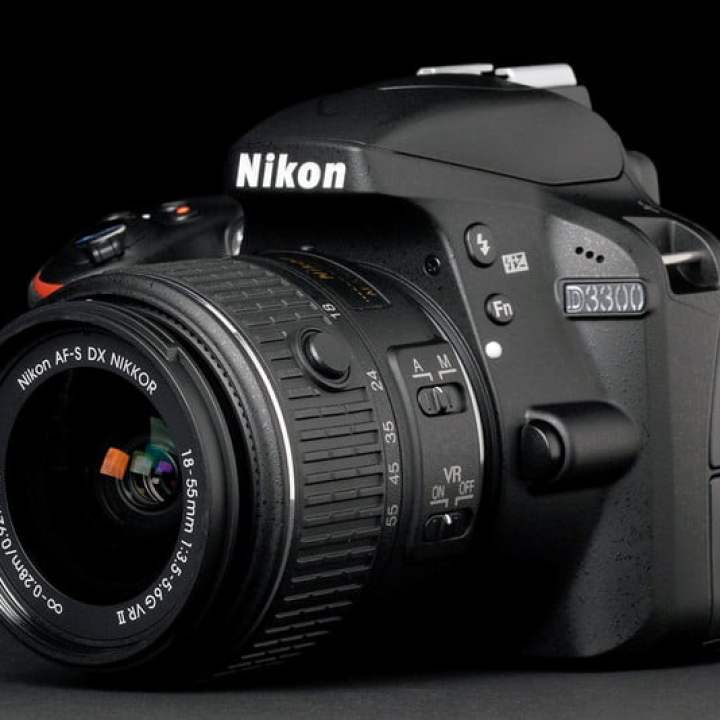
The Nikon D3300 was a remarkably good entry-level camera when it was first released in 2014, and remains one of the best DSLR cameras out there for beginners. The Nikon D3400, released a few years after the D3300, is a similar, if slightly improved, version of the same machine. Both cameras are easy to use and offer competitive image quality compared to other entry-level devices. The D3300 and the D3400 are both good starting points for anyone looking to try more advanced photography techniques and provide an approachable and affordable step up for those currently relying on their smartphone’s camera.
But, which is best?
Despite many similarities, the D3300 and D3400 differ on a few points, mainly in regards to compatibility with certain accessories. Depending on your needs and your desire to continue pursuing photography in the long run, these differences may influence which product you end up buying. We’ll compare the finer details below — but rest assured, both camera will be an excellent and reliable purchase for any newbie out there.
Performance
In many ways, the bones of the Nikon D3300 and D3400 are nearly identical. Both have a 24.2-megapixel cropped (DX) sensor; continuous shooting at 5 frames per second; and an 11-point autofocus system. They also both utilize the Expeed 4 processing engine, a component also used in the Nikon D5300 and D7200. The D3300 has a built-in panorama mode and sensor cleaning. The D3400 weighs slightly less, yet it has a longer battery life than its predecessor (1,200 versus 700 shots), but in terms of differences in the actual make-up of the machines, you’d be hard pressed to find many. The weight and battery of the D3400 are nice improvements, but by no means a deal breaker for the D3300.
Winner: Tie
Display and connectivity
Both cameras have fixed 3-inch monitors (non-touch) with 921k-dot resolutions and menu system, but the 3400 has a few extra playback options. As for connectivity, the D3300 won’t be wirelessly compatible out of the box, but you do have the option of attaching the WU-1a Wireless Adapter. However, at $60 for the attachment, it’ll likely be cheaper (or at least simpler) to just buy the D3400, which comes with SnapBridge compatibility right away. SnapBridge — a feature first introduced with the Nikon D500 — allows the D3400 to connect via Bluetooth to a compatible smart device and transfer images, allowing you to easily send or post them to social media.
Since the D3400 relies on Bluetooth and not the faster Wi-Fi, you will only be able to transfer unedited, smaller-sized images — fine for social media, but not if you plan to make serious edits. SnapBridge will also allow you to use your phone or tablet as a remote monitor, which is useful.
Winner: D3400
Image quality
Since both cameras are built so similarly, the images they produce will be nearly identical as well. Where you’ll notice the most differences in image quality (although these will be minor) is in low-light situations. The D3300 has a native ISO range of 100-12,800, expandable to 25,600 in Hi-1 mode — at the cost of quality. The D3400 has a native range of 100-25,600, without having to expand past that limit. With that said, most users shouldn’t go above 12,800 anyway, unless they don’t mind noise. The D3300 has slightly better flash range than the D3400 (12m vs. 7m). The 3400 does support newer lenses than the 3300, but it isn’t a big advantage. At the end of the day, both cameras will produce good pictures under most circumstances.
Winner: Tie
Video
Despite being the older model, the D3300 is actually a bit better when it comes to recording video. Both cameras can record Full HD video 1080/60p with monaural sound. However, what makes the D3300 stand out is the microphone port, which allows you to record better sound quality from an external microphone. While recording from the built-in microphone will get the job done, it’s less desirable for those more serious about video versus photos (such as vloggers) because the microphone is more prone to pick up operational sounds from the camera itself. That being said, the image quality of the videos will be the same regardless of which camera you end up with, but the audio may be better on the D3300.
Winner: D3300
Overall winner: D3300
Since the D3300 is a few years older than the D3400, it’s likely that you’ll be able to find it for less than the D3400. In most cases, the D3400 is going to be about $100 more than the D3300 for a single-lens kit. There will eventually be a time when the D3400 will be the only camera in this line available for purchase (since it is newer), but for the time being, the D3300 remains a great option for an entry-level camera that’s better for photos and videos. If video isn’t your thing and connectivity matters more, you’ll need to decide if the D3400 is worth the premium.
For more information on digital cameras, especially if you are a beginner, make sure to check out our 17 Essential Photography Tips for Beginners. And if you’re looking for other entry-level DSLR options, check out our list.



